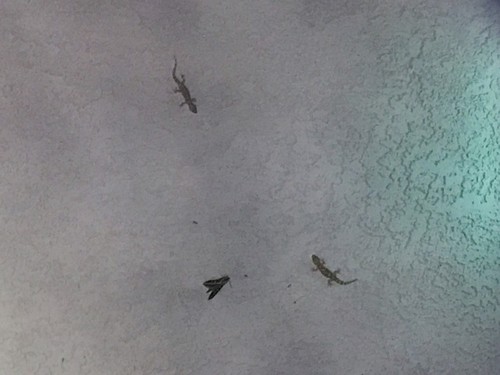Mediterranean house gecko
A species of House geckos, Also known as Moon lizard Scientific name : Hemidactylus turcicus Genus : House geckos
Mediterranean house gecko, A species of House geckos
Also known as:
Moon lizard
Scientific name: Hemidactylus turcicus
Genus: House geckos
Content
Description General Info
Description
The Mediterranean house gecko (Hemidactylus turcicus) (not to be confused with the Asian species Hemidactylus frenatus known as common house gecko) is a small gecko common to the Mediterranean which has spread to many parts of the world. It is commonly referred to as the Turkish gecko as represented in its Latin name and also as the "Moon Lizard" because it emerges in the evening. A study in Portugal found H. turcicus to be totally nocturnal,...
General Info
Lifespan
5-10 years
Diet
Mediterranean house gecko sustains mostly on a diet of insects, specifically preferring small beetles, crickets, and moth larvae, often stalking on its prey during the nocturnal hours.
Appearance
Mediterranean house gecko is a small, nocturnal gecko measuring 4-5 inches long. Its angular body is covered in tough, bumpy skin, tapering to a long, flexible tail. The skin color varies, typically presenting as pale grey with mottled brown patches, aiding in its camouflage. Notably, the underside is much lighter. No prominent differences exist due to age or sex.
Behavior
Mediterranean house gecko is a nocturnal reptile with territorial and solitary tendencies. It exhibits unique vertical climbing abilities, often spotted on buildings and trees. Marking its territory using pheromone trails, mediterranean house gecko feeds mainly on insects and spiders. This species also has fascinating adaptive camouflage skills, changing color based on environmental conditions.
Population
Increasing
Scientific Classification
Phylum
Chordates Class
Reptiles Order
Lizards and snakes Family
Common geckos Genus
House geckos Species
Mediterranean house gecko 